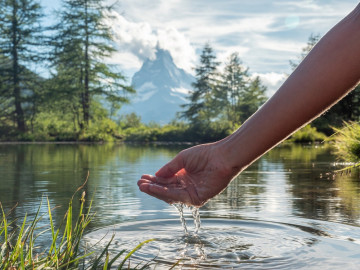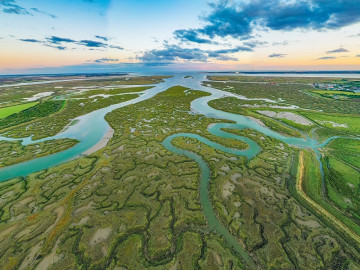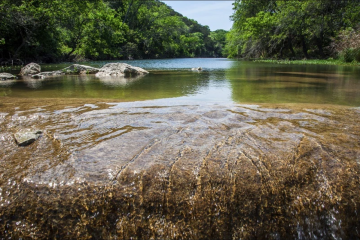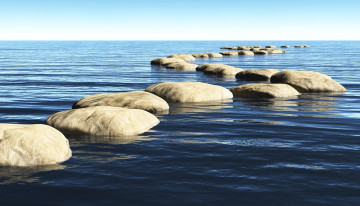Due to climate change, future water-related challenges are nearly inevitable. The World Resources Institute (WRI) has published an estimate that by 2030, there will be a 56% gap between water demand and availability. That means almost half of our collective water needs will not be met.
Simultaneously, the CDP has estimated that the cost of inaction on water risks is up to 5 times the cost of action. Water risks can create water crises that could pose one of the greatest global risks to life on earth. This raises questions for businesses – how will these emerging crises affect the industries you operate in? Will the necessary water conservation measures be voluntary or mandatory? Which key growth markets will be impacted the most? Will businesses feel regulatory pressure? Cost increases? Water supply disruptions? All the above?
Even if we don’t consider the risk multipliers from climate change, is it possible that water will NOT be an issue? Some of these answers remain to be seen. However, preparing for water-related challenges is something that every business should start doing.
8-Step Water Leadership Cycle
Antea Group’s comprehensive 8-step process can help guide you through some of the necessary steps a business should take in order to understand your water risk, maximize opportunities not only within your facility but in the watershed in which you operate, develop a water strategy to include all points along the supply chain, and implement this strategy.
This cycle is designed to be repeatable, with some steps suggested annually while others should occur every three years. It is intended to provide multiple entry points to meet you wherever you are on your water journey. Whether you’re just starting out, or have a solid water strategy already developed, the cycle will guide you in your pursuit of water stewardship, efficiently and effectively.
This process was developed in alignment with two leading frameworks in water stewardship, the CEO Water Mandate, and Alliance for Water Stewardship (AWS) Standard. Pictured below is our 8-step cycle aimed to support a company seeking to gain leadership in the water stewardship space:
Let’s look more closely at each of these 8 steps, so you can see how they may benefit your business.
1. Understand Global Water Risks
The first step in beginning a water stewardship journey is to understand your portfolio-level water risk, and for many companies, this footprint is global.
Through a global water risk assessment, you can identify and evaluate risk in three main categories: physical risks, regulatory risks, and social risks. Physical risk usually gets the most attention, as it covers the quality and quantity of available freshwater resources. However, it is important to look beyond these issues at the potential regulatory constraints as well as the social or reputational risks related to water security your company may face. In some water-stressed areas, these risks might be significant due to high competition for water resources.
When addressing your global water risks, having a local lens and understanding is crucial. With the global network of Inogen Alliance, which Antea Group is a founder of, we can provide multinational organizations with consistent, local coverage in any location.
The water risk assessment process has two main goals - to identify potential key threats (or geographical hot spots) to protect your operations in the short-medium term and to help inform business objectives and decisions in the medium-long term, such as acquisitions or expansions.
Download our Water Risk Assessment Methodology to learn more.
2. Evaluate Direct Operations
The next step in the cycle evaluates your direct operations to identify water use within your facility’s four walls. Key facilities pinpointed during Step 1 are good candidates for a water efficiency assessment. This process can help companies better understand water usage by process and identify hot spots and heavy water users
Through this process, you are able to capture existing best management practices - things that your facilities are already doing well - and make recommendations for water reduction and reuse opportunities. While the water crisis is a global issue, water should be approached at a hyper-local level – where the water use and the water impact happen. Keep in mind that no two facilities face the same challenges or have the exact same opportunities.
3. Assess Watershed Challenges
Water is connected to many facets of our world and our business, which makes understanding location-specific conditions associated with water increasingly important. In nearly every community, there are Shared Water Challenges that can impact your supply chain, facilities, communities, and markets. As mentioned above, water is uniquely local, and understanding local risks and opportunities is critical to managing short and long-term business objectives.
Once there is an understanding of the facility-specific challenges and opportunities, the cycle steps outside the four walls to understand the shared water challenges at the watershed level. Even the most perfect facility in terms of water efficiency is not risk-free if it is located in a stressed watershed. It would be like a healthy fish in a dry pond. It’s important to understand how the facility is affected by the watershed, and how the watershed is, in turn, affected by the facility. The goal of this step is to achieve a holistic understanding of the watershed conditions to begin addressing these shared water challenges by actively participating in community water solutions. Most of the shared water challenges align with UN Sustainable Development Goal 6 (Water and Sanitation for all), but positive watershed outcomes contribute to all 17 of the Sustainable Development Goals (SDGs).
4. Develop Corporate Water Strategy
By this point in the cycle, you have assessed water at the global, site, and watershed levels. As a result, you have a better understanding of where the water-related risks are, what those risk drivers are, and an idea of what your company can reasonably achieve through internal and external action.
At this point, it’s important to coalesce all these findings and consider your company’s ambition levels to begin developing a global water strategy and building a water program. This step includes defining a company’s mission on water through a publicly facing water goal statement, setting SMART (specific, measurable, achievable, realistic, and timebound) targets towards achieving this goal, and developing a roadmap on how to get there. A successful water program will contribute to your business’ resiliency and promote organizational engagement.
5. Drive Collective Action
As we have learned in Step 3, water is the ultimate shared resource. Focusing water stewardship solely within the four walls limits positive impact and does not protect companies from external risks. The private sector holds a unique position in its reliance on water, from raw materials to downstream uses, and therefore holds significant potential and leverage to lead collective action in river basins around the world.
The facility impacts the watershed and depends on it at the same time. In order to drive effective change, companies have to commit to action outside the four walls and pursue transformational change. Engaging in collective action allows for better tracking of the basin status metrics, connects you to talent from other organizations and industries through multi-sectoral collaboration, makes it easier to facilitate policy advocacy, and encourages collaborative financing.
A collaborative approach to shared water challenges recognizes that no single company can “solve water” on its own. The 8-step cycle can help facilitate this process by mapping out the important players, identifying top-priority opportunities, and setting up frameworks for long-lasting partnerships with other water users in the basin, as well as Non-Governmental Organizations, governmental organizations, etc.
6. Engage with the Supply Chain
The next step is especially critical for manufacturing and retail companies that rely on water at multiple points along the value chain. The largest water-related risks or alternatively, the greatest opportunities for responsible water management, exist in supply chains. Through supply chain engagement, you can better understand the embedded water in your product, successfully increase brand resiliency, and ensure business continuity.
This is a growth area, as more and more multinational companies announce commitments to engage with their supply chain on ESG action. According to the CEO Water Mandate, as of 2018, only 3% of companies that responded to the CDP Supply Chain Survey had taken an ‘active approach towards water stewardship’, while the upstream/raw material sectors are faced with disproportionate impacts from the effects of climate change. For example, the agricultural sector is already seeing severe impacts from water scarcity, which will affect the entire supply chain in the Food & Beverage industry. Through direct engagement with your supply chain, you can identify geographic hotspots and begin to work with key suppliers to increase resiliency.
7. Weigh Progress and Performance
This step reviews your performance against your public water goals and targets to determine if the progress is on track with the plan. It is an opportunity to ask important questions, such as: What were the challenges to making progress? What were the biggest wins? What is the value created, and can it be quantified? Does your strategy or implementation plan need to be modified?
Based on the answers to these questions, you can take action to reevaluate the strategy if there were relevant changes to the organization and goals, refocus efforts to resolve pressure points, or simply celebrate your wins.
8. Reporting and Disclosure
This final step is an opportunity to tell the story of your company’s water journey to consumers, suppliers, investors, and other interested third parties. Of course, this story is supported by data and scientific methods. Part of this may be collecting and validating water withdrawal, consumption, and discharge data for water accounting, performing scientific estimations where data is not available, and preparing disclosure reports. This step helps share your water journey with the world!
In Closing
Water scarcity issues aren’t going away any time soon. It’s up to all of us to work together to fight this problem head on. Your business can be a part of the change, but if you don’t know where to start, this 8-step cycle is for you. Antea Group has a team of credentialed Alliance for Water Stewardship professionals who support the annual certification renewal for AWS as well as global partnerships through Inogen Alliance to support your international operations.
Reach out to Antea Group’s Water Stewardship team to get started today. Collaboratively, we can all make a difference.
*The content herein is the author’s opinion and not published on behalf of the Alliance for Water Stewardship (AWS). The author holds an AWS Professional Credential and this piece of publishing helps fulfil their Continuing Contribution Units requirements. For more information about AWS or the AWS Professional Credentialing Program please visit https://a4ws.org/.
Want more news and insights like this?
Sign up for our monthly e-newsletter, The New Leaf. Our goal is to keep you updated, educated, and even a bit entertained as it relates to all things EHS and sustainability.
Have any questions?
Contact us to discuss your environment, health, safety, and sustainability needs today.









